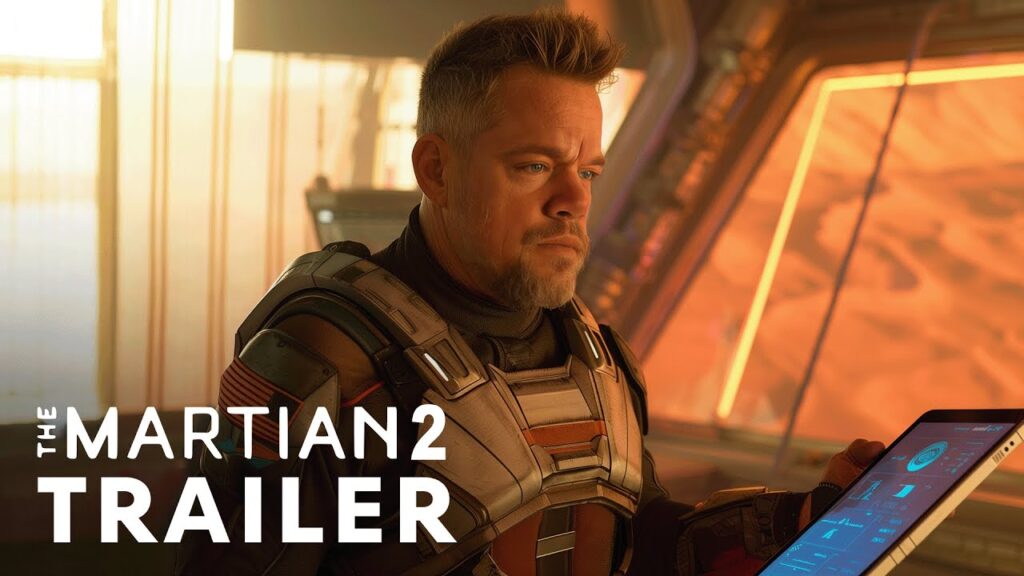
The image depicts Captain Mark Watney, not the botanist from the original Mars mission, but his son, Alex Watney. Alex, a seasoned astronaut in his late forties, is leading a multi-national mission to establish the first permanent human settlement on Mars, aptly named “Ares VI.” The mission, fraught with challenges, is nearing its critical phase: the activation of the newly constructed, self-sustaining habitat, “Hope.” The tablet in his hand displays the life support systems’ critical status – oxygen levels, water recycling efficiency, and radiation shielding integrity.
The previous Ares missions, including his father’s iconic ordeal, had pushed the boundaries of human survival on Mars. Yet, Ares VI faced unprecedented hurdles. A solar flare, more intense than predicted, had damaged a significant portion of the habitat’s power grid, triggering a cascading series of failures. Alex, haunted by his father’s experiences, refused to let the mission falter. He had spent years preparing for this – mastering engineering, piloting, and survival techniques beyond what his father had encountered.
The grim expression on his face reflects the gravity of the situation. The flickering lights in the background hinted at the sporadic power surges, constantly threatening the delicate balance of life support. He was alone, communicating only sporadically with Earth, the signal hampered by the solar storm. His crew, initially composed of three astronauts from the U.S., one from China, and one from Russia, suffered a devastating loss during a routine EVA (extravehicular activity) when a sudden dust devil, far more powerful than anticipated, destroyed their habitat module, killing two crew members.
He reviewed the data on his tablet, a constant stream of information, both reassuring and alarming. Oxygen levels were critically low, prompting him to initiate an emergency procedure to ration the remaining supply and begin a complex process to generate more from Martian ice. The radiation shielding was compromised, increasing the risk of acute radiation sickness for the remaining crew. He had to make a quick decision—whether to risk an unscheduled EVA to repair a crucial power cell under increasing solar radiation exposure, potentially risking his life, or stay inside and accept the possibility of habitat failure, leading to the death of the remaining crew.
The next few hours were a blur of intense calculations and high-pressure decisions. Alex worked tirelessly, fighting against time and fate, showcasing the same ingenuity and resilience his father was known for. He improvised solutions using salvaged parts and repurposed equipment, drawing upon his extensive knowledge and experience. He faced equipment malfunctions, unexpected geological hazards and the constant psychological pressure of solitude and imminent death.
The American flag on his shoulder was a reminder of the weight of his responsibility—not only to his crew but also to the future of humanity’s presence on Mars. He understood this mission represented more than just survival; it was a testament to humanity’s unwavering spirit in the face of adversity. His father’s story had become a legend, a source of inspiration, and now it was his turn to write a new chapter.
Days blurred into weeks as Alex worked tirelessly. He had managed to reroute power, temporarily stabilizing the oxygen supply. The threat of radiation remained, a constant, low-level hum of fear. But hope, flickering like the lights in the background, remained, fueled by his relentless drive to succeed. The orange glow in the background was a reflection of the Martian landscape beyond his window, a reminder of the harsh environment, but also a symbol of resilience.
He sent a message to Earth detailing his progress, the hope in his voice a stark contrast to the harsh reality. The image captures this pivotal moment: a man on the brink, but still fighting. His quiet determination spoke volumes, representing humanity’s unrelenting pursuit of exploration and survival. His father’s story may have started with a potato; his might end with a new dawn for mankind on Mars.
The partially visible American flag subtly underlines the national pride and responsibility inherent in the mission. The subtle, but significant technical details of the spacesuit and tablet further deepen the sense of a technologically advanced environment. The orange glow in the background acts as a metaphor for the harsh but ultimately captivating landscape of Mars, reflecting the challenges and triumphs of humanity’s continued exploration. The slightly grainy texture of the image suggests a realism, enhancing the believable portrayal of a high-stakes scientific endeavor. The title card (“The Martian 2 Trailer”) clearly establishes the context, hinting at a compelling and potentially gripping cinematic experience. The overall aesthetic blends realistic detail with a sci-fi atmosphere, effectively capturing the tension and hope inherent in the fictional scenario.


